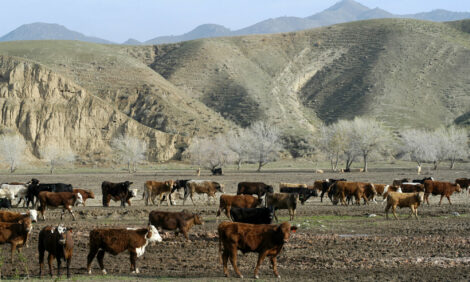



Fluke Problems In The North
UK - While the south-east of the country has been experiencing near drought conditions, Scotland has received nearly double the expected rainfall for the time of year in the last few months. Depending on how weather patterns develop over the summer months, fluke problems could be segmented by this north south divide.There is one note of caution though for anyone considering not treating for fluke this year. For the last two to three years conditions have been ideal for fluke development, with warm, wet summers, so there will be a substantial number of animals infected in previous years, depositing fluke eggs on pasture. How many of those eggs that go on to develop will, to some extent, be dependent on the weather patterns over the rest of summer but farms where there is boggy land all year round could be at risk regardless.
Farmers also need to watch for infections in June/July resulting from infected snails that have survived over the winter, with the subsequent warm spring allowing for an early start to the fluke lifecycle.
Treating with a flukicide that affects the both kills adult fluke and interferes with the reproductive function of the remaining fluke at this time, is the ideal strategy. Closantel (Flukiver) interrupts the fluke lifecycle for 13 weeks at this critical time by killing adult and immature fluke older than five to six weeks, while stunting younger immature fluke and reducing the hatchability of fluke eggs passed out in faeces.
The issue of flukicide resistance has been a topic of debate in amongst vets over the last month and one reported comment, should provide food for thought, ‘Short term regional effects of climate change in recent years have led to a longer and less predictable risk period for metacercarial infection, which many farmers have attempted to overcome by administering repeated metaphylactic triclabendazole treatments throughout late summer, autumn and winter.
Dependence on triclabendazole in this manner is potentially unsustainable given the enormous evolutionary potential of F. hepatica to adapt to changes in their environment.’ So what steps should farmers take as regards fluke treatments?
- Look at fluke forecasts over the next few weeks in particular to assess the level of risk
- Rotate the choice of flukicide in use (some may be used more effectively at some times of the year than others).
- Treat strategically, as indicated by climatic conditions and the conditions on the farm.
- Be aware of the risks of introducing fluke through bought-in animals.
- Talk to your vet or animal health adviser to develop a rational plan for fluke control.
TheCattleSite News Desk


